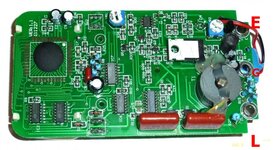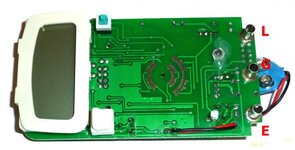xchcui
Member level 2
Hi.
I have a cheap megger that can generate:250DCV/500DCV/1000DCV.
The manual of it says:if the measured resistance is less than 1.5MΩ
at 500DCV position or less than 5MΩ at 1000VDC position,the measurement
time mustn't proceed more than 10 seconds.
I assume that there is a kind of current limiting circuit inside the megger
that may heat-up and be damaged if the measurement will be more than 10 seconds at the above conditions.
But what does it mean less than 1.5MΩ(refer to 500VDC position)?
Less than 1.5MΩ is between 0Ω to 1.5MΩ(0Ω,140Ω,3KΩ etc...),so does it mean that i allowed to make the measurement for 10 seconds also when the resistance
are 1KΩ,200Ω or even 0Ω?After all,they are all less than 1.5MΩ resistance,
right?


I have a cheap megger that can generate:250DCV/500DCV/1000DCV.
The manual of it says:if the measured resistance is less than 1.5MΩ
at 500DCV position or less than 5MΩ at 1000VDC position,the measurement
time mustn't proceed more than 10 seconds.
I assume that there is a kind of current limiting circuit inside the megger
that may heat-up and be damaged if the measurement will be more than 10 seconds at the above conditions.
But what does it mean less than 1.5MΩ(refer to 500VDC position)?
Less than 1.5MΩ is between 0Ω to 1.5MΩ(0Ω,140Ω,3KΩ etc...),so does it mean that i allowed to make the measurement for 10 seconds also when the resistance
are 1KΩ,200Ω or even 0Ω?After all,they are all less than 1.5MΩ resistance,
right?


